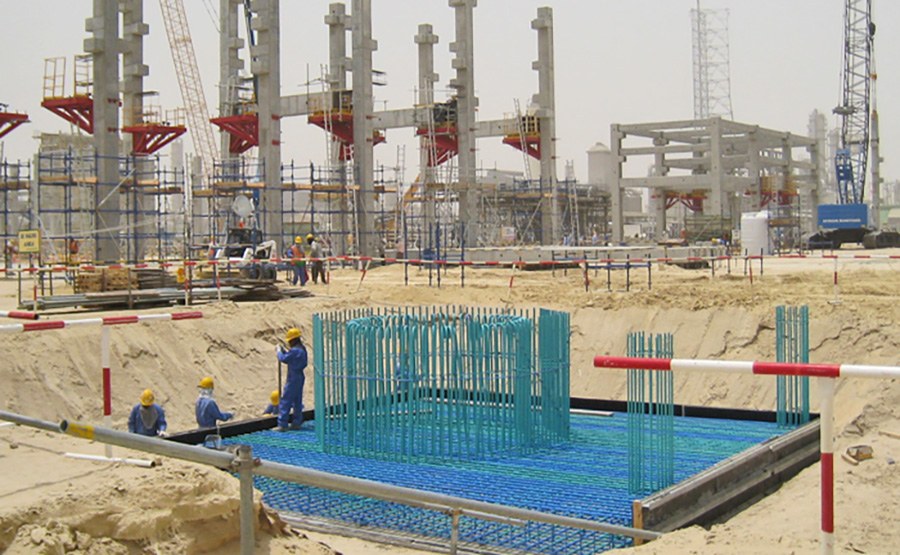Introduction
A foundation is a constructed unit that transfers the load from a superstructure to the ground. With regard to vertical loads, most foundations receive a more or less concentrated load from the superstructure and transfer this load to the soil underneath the foundation, distributing the load as a stress over the “footprint” of the foundation. The foremost requirement for a proper foundation is that the change of stress due to the soil-structure interaction must not give rise to a deformation of the soil that results in a settlement of the superstructure in excess of what the superstructure can tolerate.
Deformation is expressed by the terms movement, displacement, and settlement. The terms are not synonyms—they are related, but not equal. It is important not to confuse them.
Settlement analysis must combine the classical, well-established consolidation theory with immediate and secondary compression. Calculating settlement as a part of a design, which is in fact a prediction, is relatively easy. The problem is knowing what input parameters to apply. The knowledge is gained by back-calculating records of actual measurements. There are quite a few available.
Movement, Settlement, Consolidation, and Secondary Compression
Movement occurs as a response when a stress is applied to a soil, but the term should be reserved to deformation due to increase of total stress. Movement is the result of a transfer of stress to the soil (the movement occurs as necessary to build up the resistance to the load), when the involved, or influenced, soil volume successively increases as the stress increases. For example, movement results when load increments are added to a pile or to a plate in a static loading test (where, erroneously, the term “settlement” is often used instead of “movement”). As a term, movement is used when the involved, or affected, soil volume increases as the load gets larger.
Settlement is volume reduction of soil volume as a consequence of an increase in effective stress (and it should not be used when referring to deformation due to incremental increase of total stress, such as in a loading test). Settlement consists of either one or the sum of immediate compression, consolidation settlement, and secondary compression (secondary compression is included here because it is initiated by a change of effective stress although it occurs without change of effective stress, see below). As a term, “settlement” is used when the total stress is constant and the involved, or influenced, soil zone stays the same during the increase of the effective stress.
Immediate compression (also often called immediate settlement) is the result of compression of the soil grains (soil skeleton) and of volume reduction of any free gas present in the voids. It is usually assumed to be linearly proportional to the change of stress (i.e., assumed ‘elastic’). The immediate compression is therefore often called ‘elastic’ compression. It occurs quickly and is normally small (it is not associated with expulsion of water, i.e., consolidation).
Consolidation (also called primary consolidation) is volume reduction due to increase in effective stress with dissipation of pore pressures (expelling water from the soil body). In the process, the imposed stress, initially carried by the pore water, is transferred to the soil structure. Consolidation occurs quickly in coarse-grained soils, but slowly in fine-grained soils.
Secondary Compression is a term for compression (of the soil skeleton) occurring without an increase of effective stress, but it is triggered by the change of effective stress. Of course, there is an expulsion of water in the process, but the slow long-term compression occurs without appreciable increase or change of stress or pore pressure. Sometimes, the term “creep” is used to mean secondary compression, but avoid this because “creep” should be restricted to conditions of shear. Secondary compression is usually small, approximately similar in magnitude to the immediate compression, but it may over time add significantly to the total deformation of the soil. Secondary compression can be very large in organic soils and then actually result in an increase of pore pressure or a continuously maintained small excess pore pressure—a “self-induced consolidation” (Chang 1981).
The magnitude of the consolidation settlement is a function of the relative increase of effective stress: The larger the existing effective stress before a specific additional stress is applied, the smaller the induced settlement. For this reason, most soil materials do not show a linear relation between stress and strain. Cohesive soils, in particular, have a distinct stress-strain non-linearity. The exception being, for example, very dense soils, such as glacial clay tills, where the stress-strain behavior can be approximated to a linear relation. A special case of non-linearity occurs for a stress-increase beyond the preconsolidation stress in an over-consolidated soil (“pre-consolidation” is stress that is larger than the current effective overburden stress in the soil), resulting in a stress-strain behavior that is much more compressible beyond the preconsolidation stress than below. An increase of effective stress within the preconsolidation range does not trigger consolidation unless the stress increase has caused an increase of pore pressure, then, usually only to a small degree.
The amount of deformation for a given contact stress depends on the distribution of that stress change (relative existing stress) in the affected soil mass and the compressibility of the soil layer. The change of effective stress is the difference between the initial (original) effective stress and the final effective stress.


